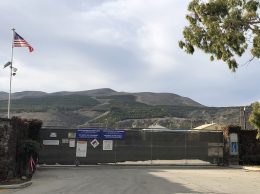Tri-county hospital rebuilds make room for beds
IN THIS ARTICLE
- Central Coast Topic
- Tony Biasotti Author
By Tony Biasotti Friday, March 27th, 2020
The tri-county region, like the rest of California, is likely to face shortages of hospital beds and other medical resources during the coronavirus pandemic, but the bed shortage could be made less severe by the region’s recent hospital building boom.
Until the pandemic, parts of the region had an oversupply of potential hospital beds — hospital wings or buildings that were once used for inpatient care and have since been converted to outpatient services, offices or storage, or left empty. That was due to a 1994 state law, passed after the Northridge earthquake, that required all hospitals in California to meet seismic safety standards.
The law’s deadlines have been extended many times, and many hospitals in the state are still operating under extensions. Other hospitals met the requirements with retrofits that didn’t involve much new construction. But in the Tri-Counties, hospitals spent millions of dollars on new wings or towers, and often mothballed or repurposed the old ones.
For example, Community Memorial Hospital in Ventura opened a new six-story, 350,000-square-foot hospital building in December 2018, with 250 patient beds. The old building, just across the parking lot, once held 242 patient beds and is now home to administrative offices, outpatient services and a medical school resident program. The upper floors of the old tower remain empty.
Other hospitals that have built or expanded facilities to meet state seismic requirements in-clude Ventura County Medical Center in Ventura, St. John’s Pleasant Valley Hospital in Camarillo, Adventist Health Simi Valley, Los Robles Hospital in Thousand Oaks, Cottage Hospital in Santa Barbara and Marian Regional Medical Center in Santa Maria.
Those construction projects took place over more than a decade, and it is not clear which hospitals kept their old buildings standing and in condition to be easily returned to use for patient care. Even bringing hundreds of rooms back online won’t make a serious dent in the state’s projected hospital shortage, which Gov. Gavin Newsom has estimated at 50,000 beds statewide.
But at the very least, the region’s hospitals have space for hundreds more beds than they did before the seismic safety work.
“Every little bit might help. It makes it that much less likely that you end up treating patients in tents at the fairgrounds,” said Todd Flosi, chief medical officer at Ventura County Medical Center and Santa Paula Hospital.
VCMC, Ventura County’s public hospital, opened a new 180-bed wing in 2017 and converted the old wing to offices and outpatient care. The Ventura County Health Care Agency is now looking at plans to increase VCMC’s capacity during the crisis by moving patients into the old wing.
There are some advantages to using an old hospital wing rather than a university dorm, a hotel, an empty warehouse or another available building.
“Those buildings still have oxygen piped through the walls. They’re wired for patient care,” Flosi said.
There are also obstacles to bringing mothballed hospital rooms back online.
The new wings were filled with new beds and other equipment, and the old stuff was disposed of. Filling old wings back up with supplies and equipment might be harder than finding physical space for patients, especially given the projected shortages of ventilators and other supplies.
“It depend on what our expectations are as far as how long we’re going to be living like this,” said Benjamin Preston, a senior policy researcher at Rand Corp., who wrote a report last year on the financial impacts of California’s seismic requirements for hospitals. “If this is a two-month thing, what you’d have to do to fill out a 200-bed tower might be more work than having the National Guard come in and set up tents. If this is an 18-month thing, that stuff starts to look more feasible.”
Preston said the Tri-Counties may be unusual in its surplus of hospital buildings. The state has not tracked which hospitals have built new wings and whether those hospitals left the old ones standing — the state is concerned with whether hospitals are in compliance with the law, not what steps they took to get there.
“I would be surprised if it were that common” to keep unused facilities standing, Preston said. “Hospital real estate is a precious commodity.”
Apart from any surplus space, California’s wave of seismic renovations could prove useful in other ways during the pandemic. New hospitals, whether they’ve been renovated or built from the ground up, are better equipped than old ones to contain a contagion like the novel coronavirus, Preston said. They have better air filtration systems, better “clean rooms” for decontamination and more space between patient beds.
But new buildings often have fewer rooms and beds than older ones, due to both modern building codes and reduced demand for inpatient services.
“They’re trying to right-size their hospitals for how many clients they have,” Preston said. “They’re not building hospitals with the expectation that it would be nice to have 20 percent more beds in the event of the next pandemic.”
• Contact Tony Biasotti at [email protected].
Related Articles
 Friday, October 14th, 2022
Friday, October 14th, 2022











